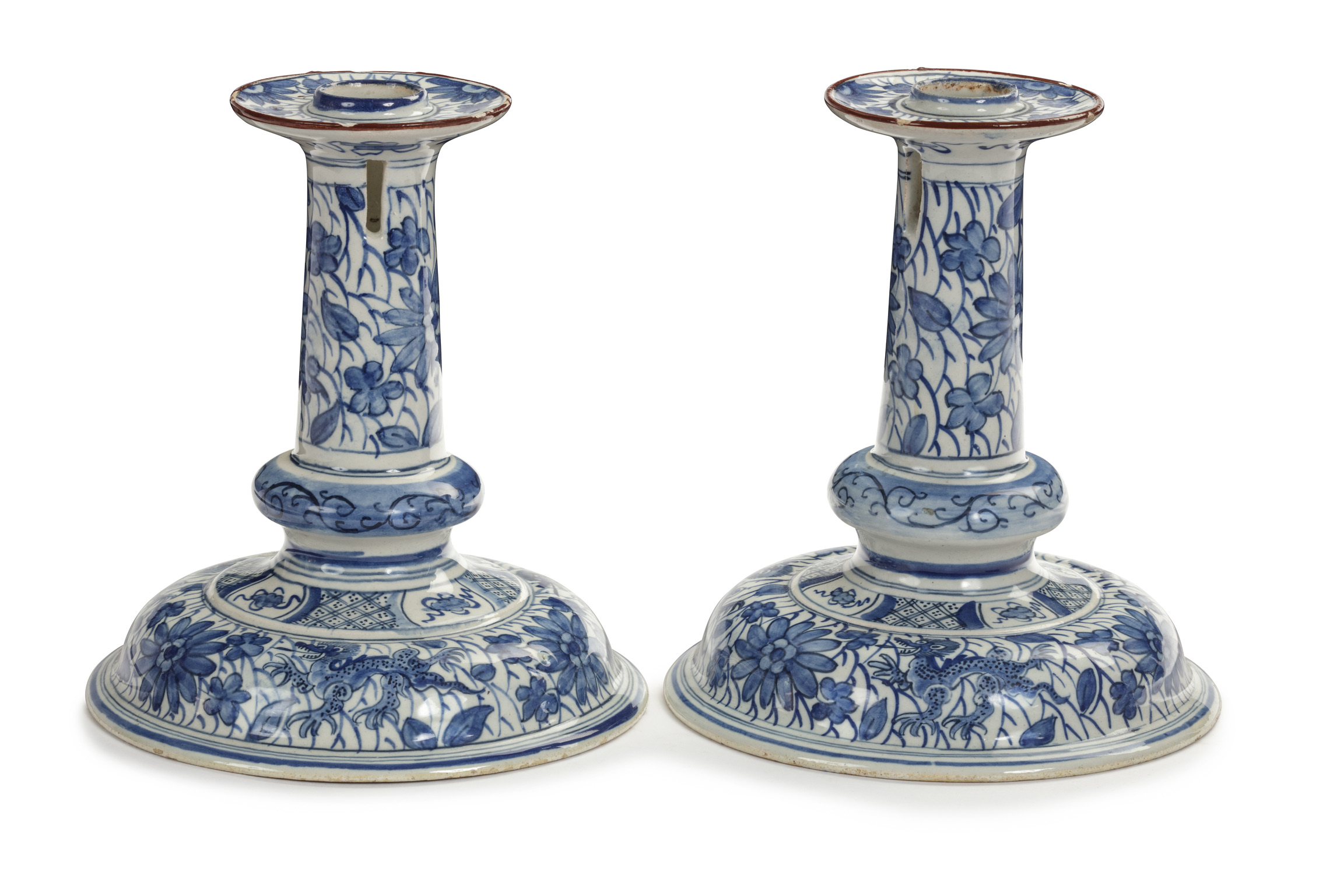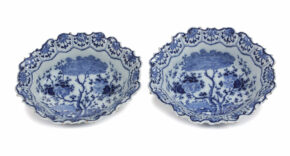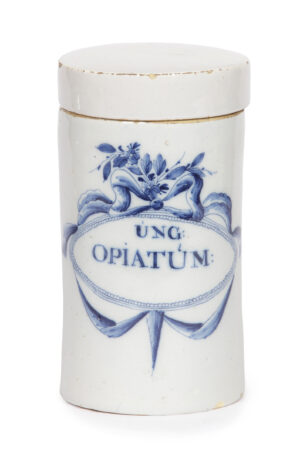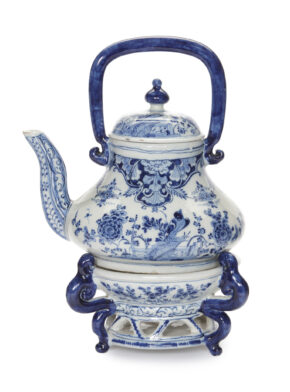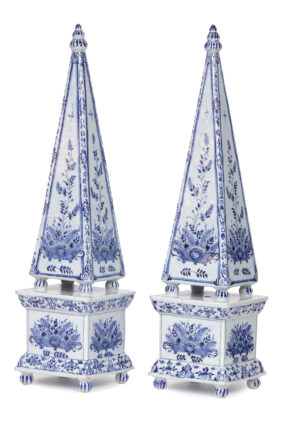![]()
Images on this website are licensed under a
Creative Commons Attribution-NoDerivs 3.0 Unported License.
OBJECT
D2325. Pair of Blue and White Candlesticks
Delft, circa 1730
Unidentifiably marked D and numbered 14 in blue
Each painted on the domed foot with three snarling dragons amidst a profusion of flowering branches below an upstanding trellis diaper border reserved with five oval panels decorated with Daoist symbols, the blue ground knopped cylindrical shaft painted with a profusion of flowers and leaves and pierced with a slit for wax extraction at the top, and the large bobêche with a similar pattern of flowers and leaves.
DIMENSIONS
Heights: 17.5 cm. (6.9 in.)
NOTE
The letter D mark has not been identified definitively, however it may indicate production by De Dissel (The Pole) factory or De Drie Vergulde Astonne (The Three Gilded Ash Barrels). Since De Dissel factory was liquidated in 1702, and this pair of candlesticks was probably produced around 1730 it is more likely that the D refers to Zacharias Dextra who owned De Drie Vergulde Astonne factory between 1722 and 1759. However, the letter D might also refer to the city of Delft.
The pattern, derived from a Chinese original of the Kangxi Period (1662-1722), is known to have been in use on Dutch Delftware as early as the late seventeenth century, but it also remained popular for many years thereafter.
There are many types of candlesticks, as they were the primary source of light in all households for hundreds of years. Originally, a candlestick was simply a cup or spike which held the candle upright and caught the dripping wax as it melted to protect the surface that the candle was upon. During the seventeenth and eighteenth centuries candlesticks became much more commonly used as the French style of eating later in the evening was adapted across Europe. The changing dining habits created a greater demand for ornamental candlesticks for their aesthetic appeal on the dinner table as well as their functionality. Candlesticks and candelabra designed in silver became especially desirable. Designed with height and grandeur, the lavish silverware were showpieces on the center of the table and equally served an important practical use.
Silver is a precious metal, which distinguishes it from wood, glass and porcelain, which do not have any inherent value. While silver coins could be melted down for utilitarian and decorative objects, the precious metal was not invulnerable to a changing economy. Silver was subject to the numerous fiscal crises of the late seventeenth and eighteenth centuries, especially in France. France’s involvement in expensive wars forced both Louis XIV and Louis XV to order all available silver (including the silver furniture at Versailles) to be melted down to replenish the country’s coffers. In the process, the royal silver service was replaced with a Chinese porcelain blue and white service. The melting of silver from grand houses encouraged the French faience industry to increase the production of both ornamental and functional pieces, worthy of royal and aristocratic tables. In their sudden need for silver substitutes, the marchands merciers had to reach beyond the local factories to potters in other parts of Europe, and particularly in the nearby Netherlands.
It was for this reason, among others, that Dutch Delftware and other earthenware reached its highest level of production. Like the present pair of candlesticks, the ceramic forms followed the shapes of the original silver objects and were made with the finest quality. The popularity of refined faience on the dinner tables of the European courts and noble houses increased the prestige of Delftware, and the pieces created at the end of the seventeenth century and the beginning of the eighteenth century came to rival and sometimes even surpass their silver counterparts.
SIMILAR EXAMPLES
The dragon pattern on this pair of candlesticks was closely imitated and emulated after Chinese porcelain. There are various sorts of Delft tableware with this type of decoration, such as plates (Aronson 2012, pp. 28-29, no. 15) and egg cups (Aronson 2012, p. 31, no. 16), but also salt cellars and an oil and vinegar ménage (Rijksmuseum Amsterdam, inv. nos. BK-1961-33-A, BK-1961-33-B and BK-1961- 32). These objects were possibly used to complement a Chinese porcelain service.

